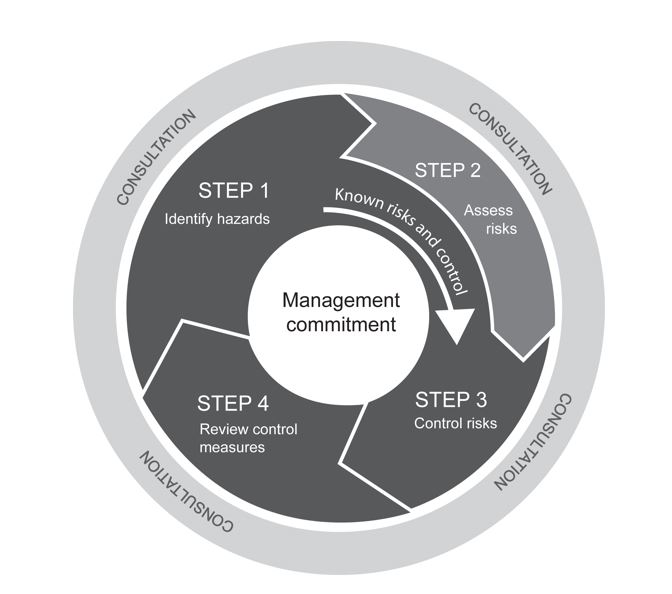Introduction
As technological systems become more complex, it becomes increasingly difficult to identify safety hazards and to control their impact. Plant Managers and Engineers are becoming more aware that safety and risk touch on every aspect of the day to day running of their Plants and engineering and process systems if they are to comply with ever changing and demanding International, and National environmental and economic values and standards.
Unsafe systems can result in monies being lost due to accidents, disruption to production, criminal and civil prosecutions, loss of market share, and the degradation of company assets and the environment.
The highlights of this course are as follows:
- Introduce to the delegate the practical ways of safety engineering and risk assessment systems
- Methods and techniques in eliminating, mitigating and controlling major hazard situations and conditions
- Using well established principles defined by International and professional bodies such as IChemE ( Institute of Chemical Engineers), developed and formulated over many years and further established from learning from major accidents
- Provide the delegate with a working knowledge of the proactive and reactive processes by which quantifiable assessments can be used to assess and control risks
Objectives
The overall objective is to ensure that participants are familiar with the concept of reliability and fundamentals of risk assessments. The course has been designed to enable delegates upon completion to be able to:
- Apply the principles of hazard identification and assessment of risk to processes and machinery
- Understand reliability concept and use of failure tracing methods
- Demonstrate a practical understanding of a quantitative risk assessment technique and the date required for records
- Advise management on the most effective control methods based on the evaluation of risk
- Identify the general requirement for development of safe system of work
- Recognise relevant International Standards for Reliability and Machinery Safety
Training Methodology
The course shall be presented by a combination of interactive lectures, videos, and knowledge and understanding further established by way of a number of syndicate group exercises.
Organizational Impact
- Professional development of staff; the organisation should be able to prevent accidents and minimise losses through improved reliability and safety
- Awareness of tried and tested International practical principles to make quantifiable decisions to assist in evaluating risks from engineering options
- Enable the delegate to apply the principles of safety engineering and risk assessment back at his or her workplace by putting into practice the practical knowledge gained from the course
- Help promote the importance of ongoing monitoring and reviewing of safety systems
Personal Impact
- Promotes a proactive attitude within the individual to hazard analysis
- Introduce the proactive concept and benefits of safety engineering and hazard / risk assessment analysis
- Help to recognise the range of the key factors to be considered in the process of hazard and risk assessment analysis
- Introduce the delegate to the methods and techniques for evaluation hazards across a variety of industry sectors
- Enlighten the delegate to the importance of continued learning from accidents and incidents
Who Should Attend?
- Plant Professionals
- Engineers
- Designers
- All Professionals who has a contribution to make in ensuring the safe operation of a potential high hazard workplace
SEMINAR OUTLINE
DAY 1
Hazard Identification
- Introduction and course overview
- Why do we need safety engineering
- Examples of major disasters
- The safety system process
- Hazard identification
- Hazard control
- Criteria for risk tolerability
- Hazard Identification Techniques
- Design out hazards
- Safety standards codes, national and international
- Safety analysis in engineering
- Safety analysis in Chemical process
- Safety analysis in manufacturing
DAY 2
Risk Assessment Techniques
- Safety Management
- Safety in system life cycle
- Hazard identification check-list
- Process, workplace, work equipment risk assessment
- Task-based risk assessment
- Introduction to HAZOP
DAY 3
Machinery and Work Equipment Safety
- Machinery hazard identification
- Causes and methods for machinery accident prevention
- HAZOP examples
- Failure modes, human factors and software safety
- Conducting a failure mode and effective analysis
- Human factors safety analysis
- Performance and human error
- Human factors and safety analysis
DAY 4
Reliability Technology
- Types and causes of failures
- Methods of preventing failure
- Types of maintenance and inspection regimes
- Reliability of components and systems
- Design and reliability of control systems
- Design and reliability of protective systems
- The concept of ‘HIPS’
- Safety Integrity Levels ‘SIL’ selection
DAY 5
Consequences Analysis
- Mechanics of fire, explosion and toxic releases
- Dispersion modelling software
- Types of fire: flash, jet, cascading fires and BLEVE
- Types of explosion
- Quantification of risk
- Event Tree Analysis ‘ETA’
- Course Summary
- Course Review

